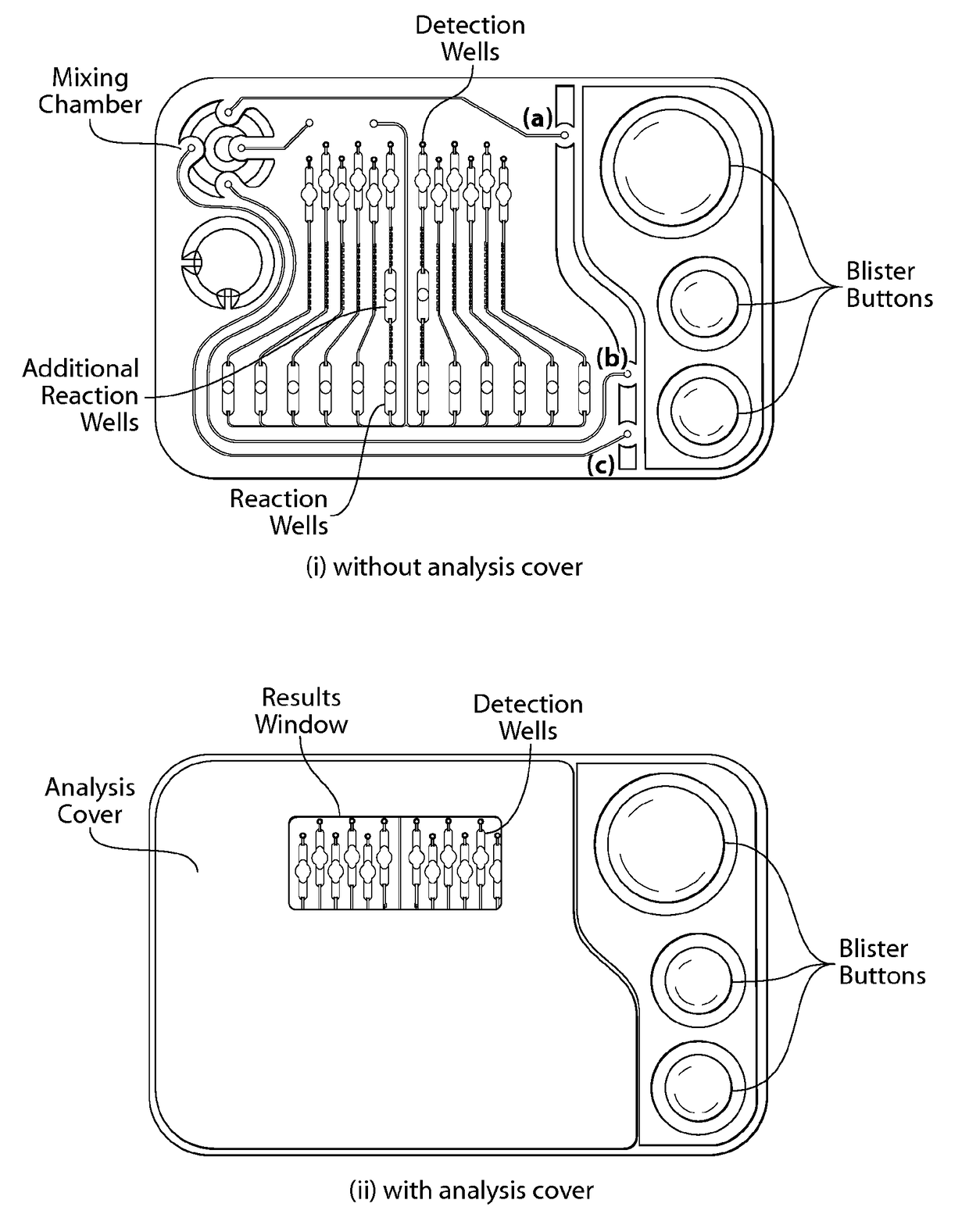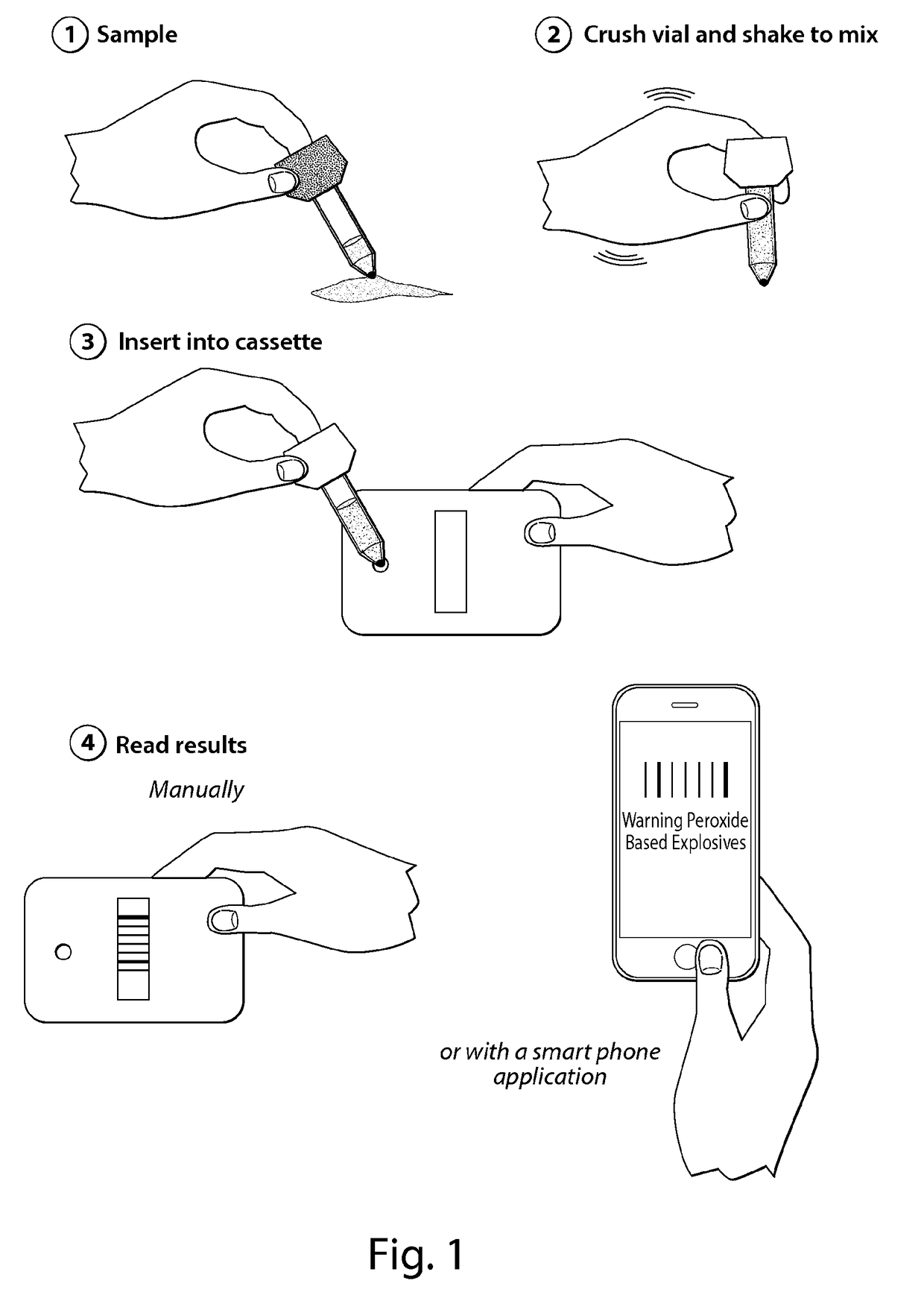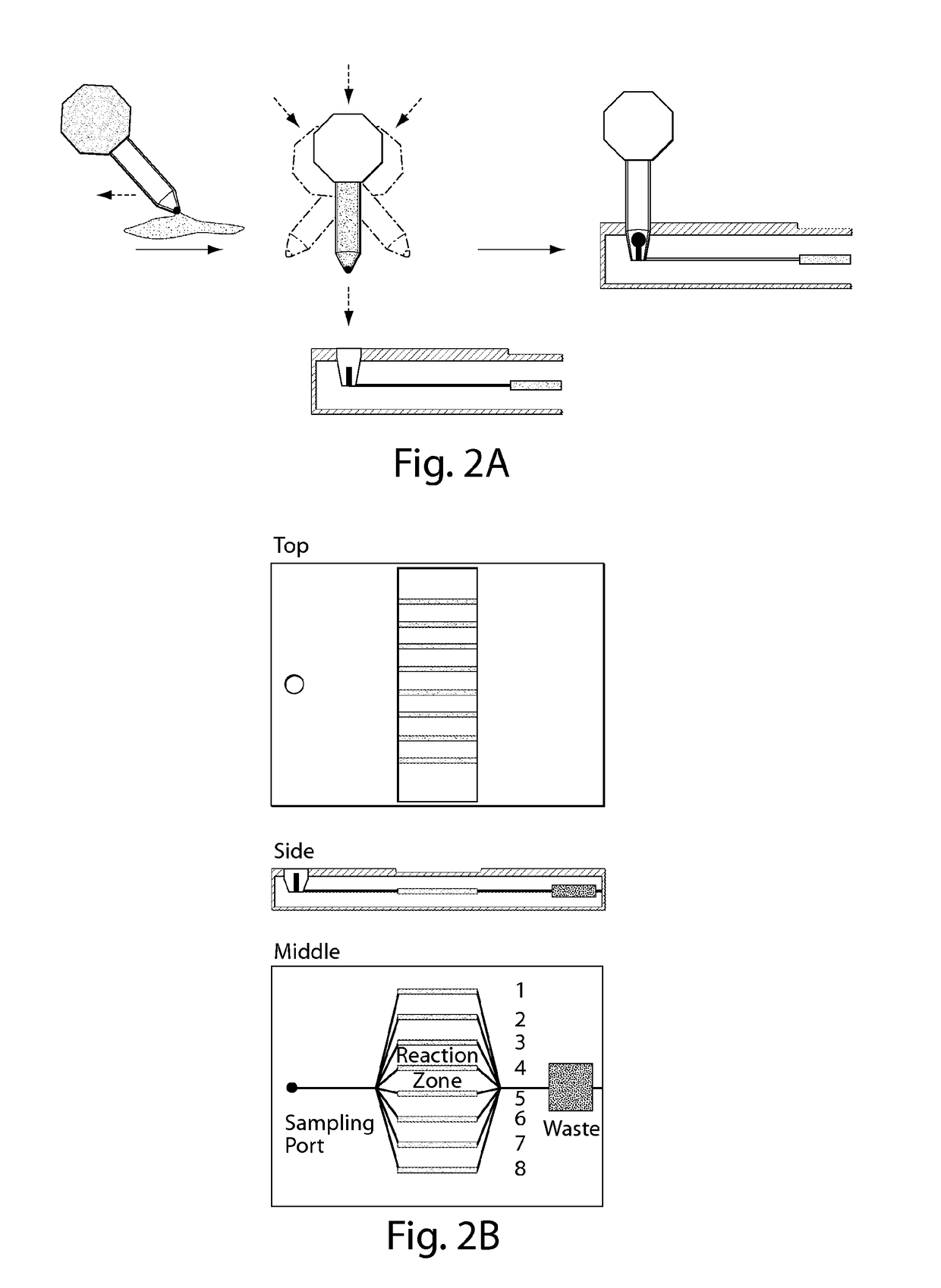Device and methods for detection of analytes including use of a colorimetric barcode
a colorimetric barcode and analyte technology, applied in the field of devices and methods for the collection and/or determination of analytes, can solve the problems of many users exposed to toxic reagents and/or are prone to false positives
- Summary
- Abstract
- Description
- Claims
- Application Information
AI Technical Summary
Benefits of technology
Problems solved by technology
Method used
Image
Examples
examples and embodiments
Example 1
[0079]The following example describes the study of sample collection efficiency using either a swipe or a roller. Analyte samples were prepared by dry transfer of the analyte to a cardboard or plastic substrate. To evaluate swipe collection efficiency, the analyte substrate was swiped with either Nomex™ or 3M™ tape, and the sample was extracted from the swipe by solvent and analyzed by HPLC and / or ion chromatography. To evaluate rolling substrate collection efficiency, a prototype roller was functionalized with a swipe material, e.g., Nomex™ or 3M™ tape, and contacted with the analyte substrate via a “one roll” swiping mechanism. The sample was then extracted from the roller by solvent (800 μL) and analyzed by HPLC and / or ion chromatography. The solvent mixture utilized in these tests was based on compatibility with the detection chemistries. Tests were repeated 5 times or more.
[0080]FIG. 4 shows a comparison of sample collection efficiency for either swiping or rolling con...
example 2
[0081]The following example describes the determination of various analytes using devices as described herein. FIG. 7A shows the detection of a nitroaromatic using the formation of a Meisenheimer complex, as shown in FIG. 3A. A fluid sample containing trinitrotoluene (TNT) was injected into the prototype sample analysis device pre-loaded with Meisenheimer reagents, at various concentrations, with the results for the highest concentrated sample shown in the top channel.
[0082]FIG. 7B shows the detection of an inorganic nitrate using the zinc-modified Griess reaction. A fluid sample containing an inorganic nitrate was injected into the prototype sample analysis device pre-loaded with zinc-modified Griess reagents, at various concentrations, with the results for the highest concentrated sample shown in the top channel.
[0083]FIG. 7C shows the detection of ammonium nitrate using Berthelot's reaction. A fluid sample containing ammonium nitrate was injected into the prototype sample analysi...
PUM
| Property | Measurement | Unit |
|---|---|---|
| pore size | aaaaa | aaaaa |
| pore size | aaaaa | aaaaa |
| luminescent | aaaaa | aaaaa |
Abstract
Description
Claims
Application Information
 Login to View More
Login to View More - R&D
- Intellectual Property
- Life Sciences
- Materials
- Tech Scout
- Unparalleled Data Quality
- Higher Quality Content
- 60% Fewer Hallucinations
Browse by: Latest US Patents, China's latest patents, Technical Efficacy Thesaurus, Application Domain, Technology Topic, Popular Technical Reports.
© 2025 PatSnap. All rights reserved.Legal|Privacy policy|Modern Slavery Act Transparency Statement|Sitemap|About US| Contact US: help@patsnap.com



